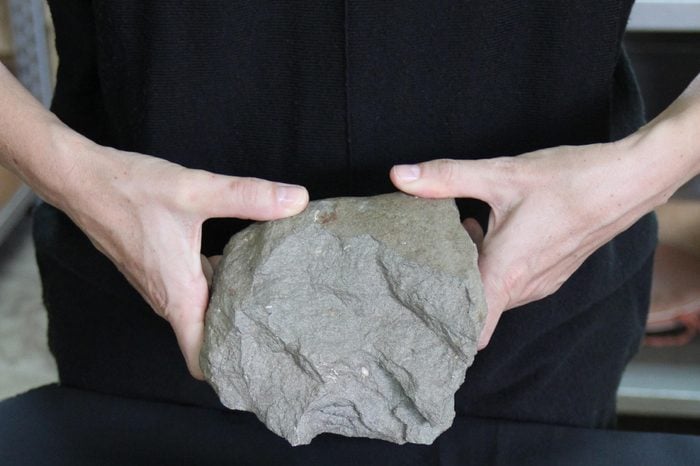
Lomekwi stone tools: 3.3 million years old
“It is really exciting and very moving to be the first person to pick up a stone artifact since its original maker put it down millions of years ago,” says Jason Lewis, assistant director of the Turkana Basin Institute and co-author of a study published in Nature in 2015 about his team’s discovery in Kenya. Who that original maker is, however, remains unknown—the Lomekwi tools were created for hammering and cutting well before the genus Homo (the line of species that would eventually produce us, modern humans) is thought to have emerged around 2.8 million years ago. “Conventional wisdom in human evolutionary studies [since the 1960s] has supposed that the origins of knapping stone tools by our ancestors was linked to the emergence of the genus Homo and that this technological development was tied to climate change and the spread of savanna grasslands,” Lewis says. “The premise was that our lineage alone took the cognitive leap of hitting stones together to strike off sharp flakes and that this was the foundation of our evolutionary success.” The discovery by the West Turkana Archaeological Project team—co-led with Sonia Harmand (Stony Brook University and Centre National de la Recherche Scientifique)—of tools half a million years older than the earliest known Homo fossils shows that it’s possible that other, earlier hominins (a group including modern humans, extinct human species, and extinct species that are very closely related to us, such as Australopithecus, the genus that includes the famous Lucy fossil) figured out how to make tools, or that some as yet unknown member of the genus Homo developed much earlier than we thought.
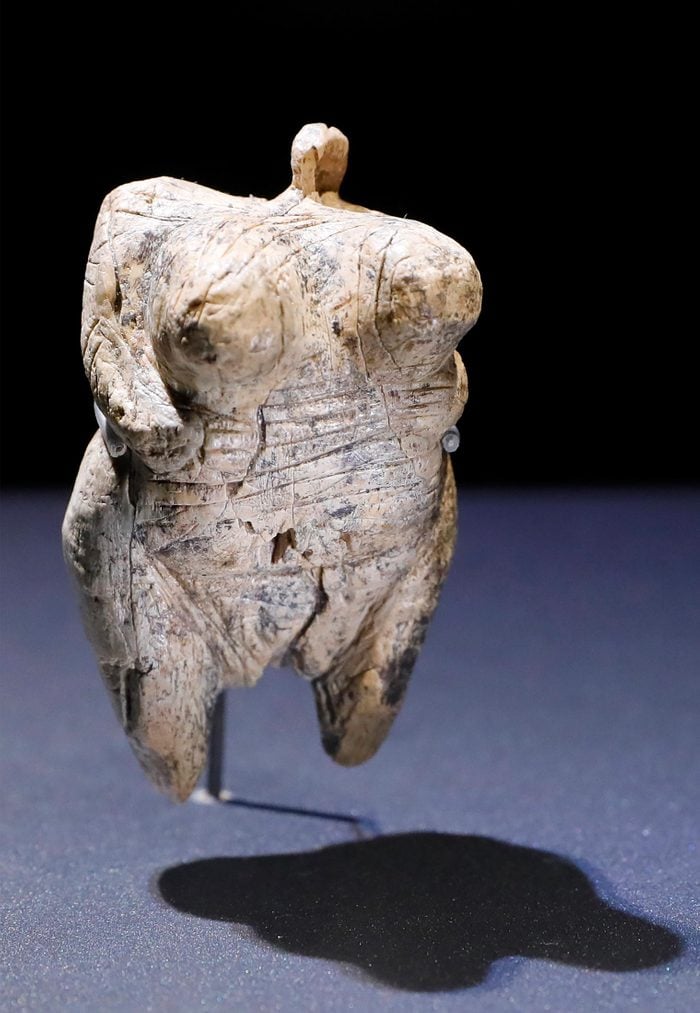
Sculpture representing a human: 40,000 years old
There are several caves in a mountain range in southern Germany called the Swabian Jura that contains evidence of occupation by Ice Age Homo sapiens around 40,000 years ago—there are remains of campfires, tools, weapons, and jewelry, as well as figurines carved from mammoth ivory with stone tools. The Venus of Hohle Fels, a 2.5-inch sculpture from that trove, is the first known example of a sculpture of a human figure. “You couldn’t get more female than this,” Nicholas Conard, the Ohio-born archaeologist whose University of Tübingen team found the statue, told Smithsonian. The Venus is a squat figure with very large breasts and genitalia and might have been a fertility symbol. Find out the ancient mysteries scientists still can’t explain.
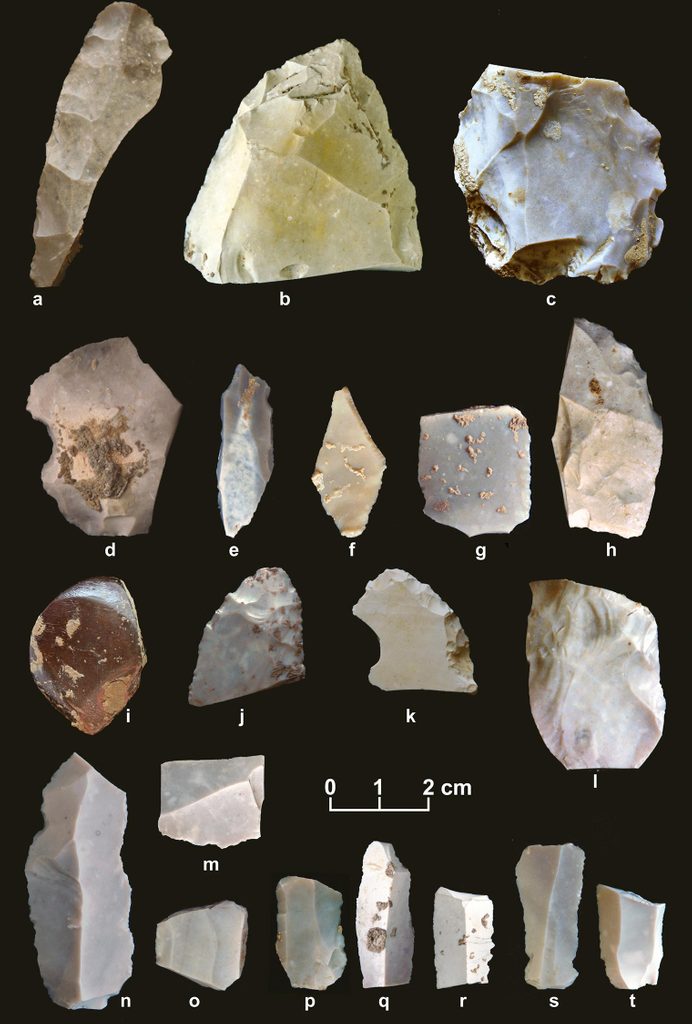
Stone tools in the Americas: 15,500 years old
At the Buttermilk Creek archaeological site in central Texas, Michael R. Waters, director of the Center for the Study of the First Americans at Texas A&M University, and his team found projectile points, blades, and other tools that date back beyond the time frame that researchers long believed humans had migrated through the Americas after crossing the Bering Strait from Siberia at the end of the last ice age. “This is the oldest credible archaeological site in North America,” Dr. Waters told the New York Times in 2011. It proves that people must have gotten past the Bering Strait region before the ice receded, meaning they probably traveled south along the west coast—possibly in boats—to reach mainland North and South America and spread out across the continents.
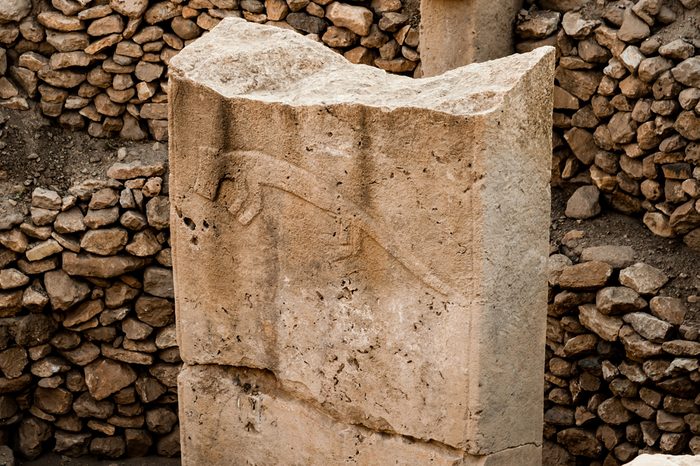
Temple: 11,000 years old
The Gobekli Tepe site in southeastern Turkey, which is filled with large carved stones, was built by people who hadn’t even developed metal tools yet. Stone pillars—some as tall as 16 feet—are arranged in circles, and many are carved with foxes, lions, scorpions, and vultures. “This is the first human-built holy place,” German archaeologist Klaus Schmidt told Smithsonian’s Andrew Curry in 2008.
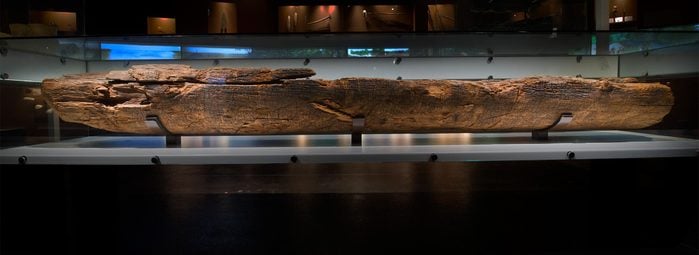
Boat: 10,000 years old
The Pesse canoe was found in the Netherlands during highway construction in 1955 and is the oldest boat ever discovered. It was made by digging out the inside of a log with an ax, according to the Drents Museum in Assen. Because some researchers wondered whether the piece might be an animal trough (though humans weren’t keeping animals at that time in the Netherlands), the museum created a replica and took it out on the water, proving that it would have floated. Here are some of the weirdest archeological discoveries ever made.
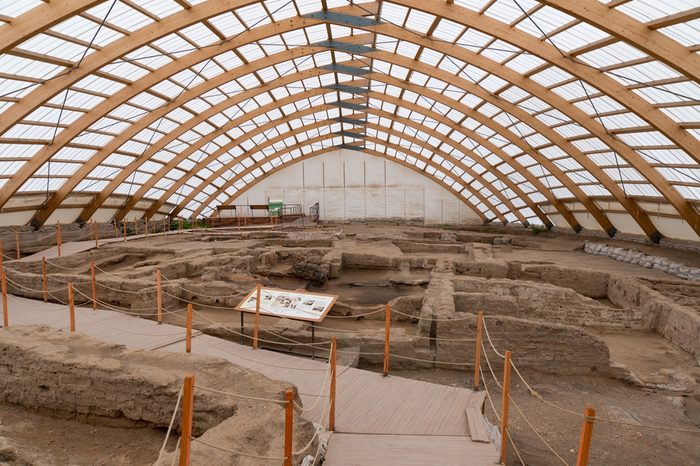
City: 9,500 years old
Çatalhöyük, in central Turkey, is one of the world’s largest Neolithic settlements and might be one of the first places where humans gathered in close quarters. They built hundreds of houses out of mud bricks and had paintings and plaster reliefs on the walls, and they buried their dead under plaster floors. What’s more, all the houses were remarkably similar, and don’t show signs of greater or lesser wealth or status, according to a Discover magazine article by Jennifer Hattam, leading researchers to think the society might have functioned without clear leaders.
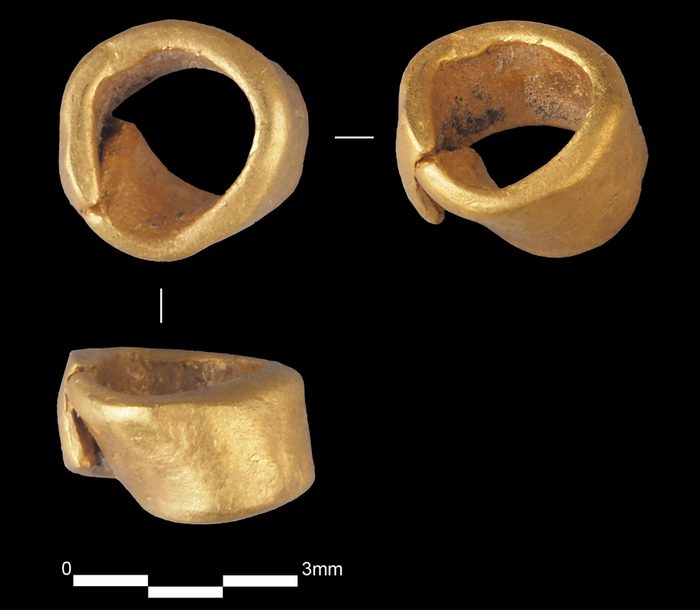
Gold bead: 6,500 years old
A tiny gold bead unearthed in Bulgaria is thought to be the oldest example of a processed gold object ever discovered. It’s only an eighth of an inch in diameter, and it was found at a site called Tell Yunatsite where researchers have also found hundreds of ceramic bird figurines that might have been used in a religious ceremony. The area was home to a Balkan Copper-Age civilization, where metal production was developed and people had extensive trading networks.
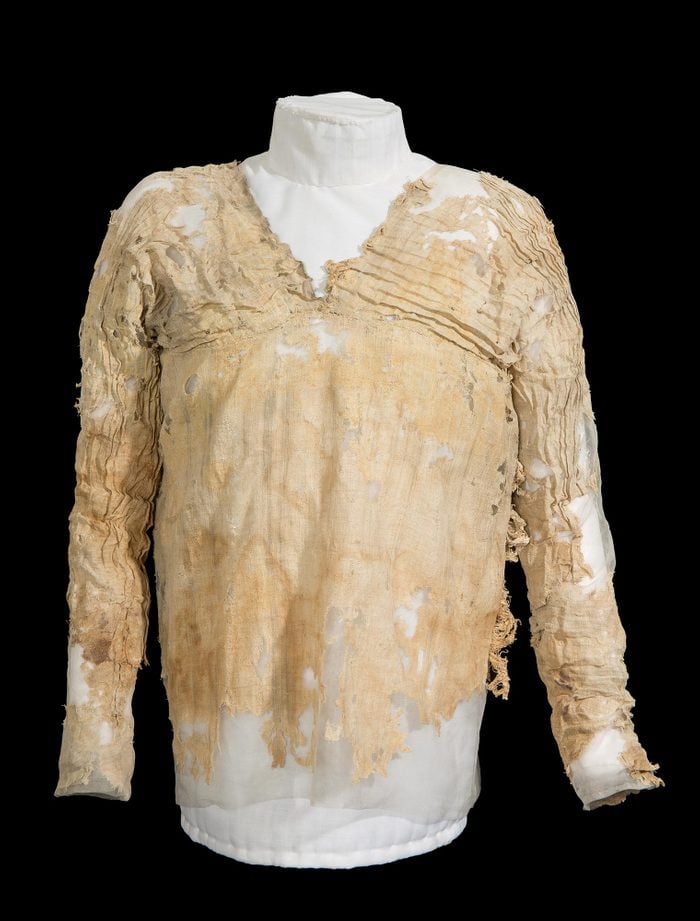
Linen dress: 5,200 years old
The oldest woven garment ever discovered, the Tarkhan dress was found in an Egyptian tomb in the early 1900s and shipped off without careful study. In 1977, researchers at the Petrie Museum of Egyptian Archaeology in London realized what they had on their hands—the dress has pleats in the sleeves and bodice and a V-neck and is significantly more sophisticated than the basic cloths and wraps that had previously been found from the period. Because textiles made from plant materials usually degrade quickly, it’s rare to find them older than 2,000 years at archaeological sites, Alice Stevenson, a curator at the Petrie and author of a 2016 study about the Tarkhan dress’s age in the journal Antiquity, told National Geographic.
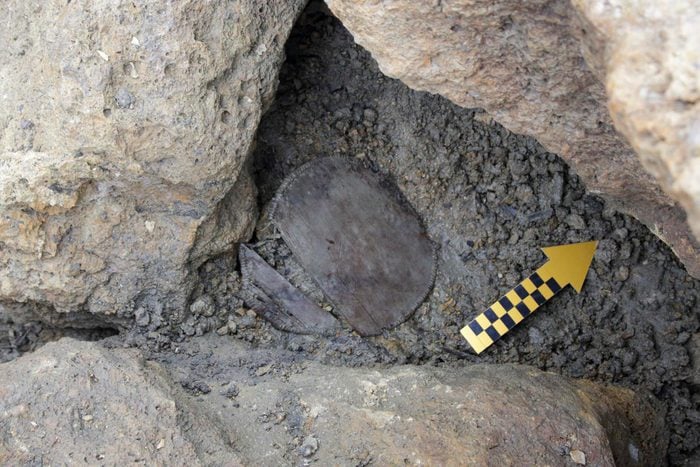
Lunchbox: 3,500 years old
A hiker traveling through the Swiss Alps dropped his or her lunch thousands of years ago, and the small, circular wooden box holding the food was found in 2012 after receding glaciers left it exposed. When researchers from the Max Planck Institute for the Science of Human History performed a molecular analysis to see what it had contained, they found human-grown cereal grains, including wheat and barley or rye—most food containers of similar eras have shown evidence of milk and meat. “The domestication of plants, such as wheat, was one of the most significant cultural and evolutionary steps of our species, but direct evidence for the use of domesticated plants, for example, in early culinary practices, has remained frustratingly elusive,” says a statement from the Institute. Learn more about the most baffling mysteries of the universe.

Cave painting studio: 100,000 years old
Some hunter-gatherers along the coast of South Africa stopped in a pleasant seaside cave (now called the Blombos cave) and mixed up some paints in abalone shells. We don’t know what they painted, but the kit they left behind is the oldest evidence of humans making a compound mixture: They blended crushed bones that were heated to release oils from the marrow with ocher, a soft red clay. “They must have had an elementary knowledge of chemistry,” Christopher Henshilwood, an archaeologist at the University of the Witwatersrand in Johannesburg who participated in the study, told Live Science in 2011. “And they also had a recipe for this compound or this paint.”
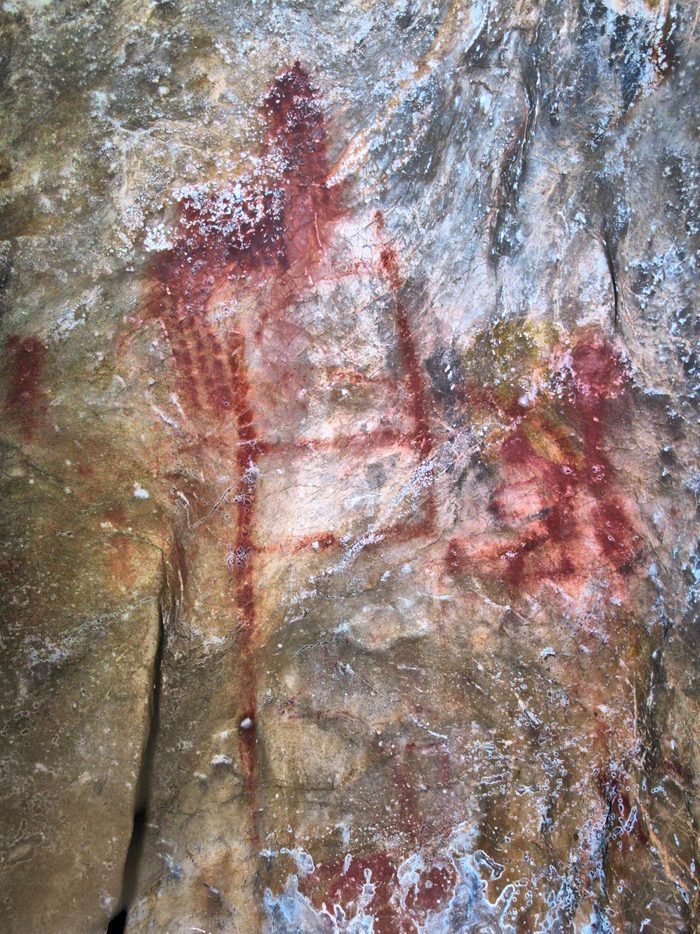
Neanderthal cave paintings: 64,000 years old
In a series of caves in Spain, researchers found the oldest cave paintings ever discovered. The images include hand stencils and linear motifs that had to have been made by Neanderthals since modern humans are not known to have migrated to Europe until 40,000 to 50,000 years ago. “Neanderthals appear to have had a cultural competence that was shared by modern humans,” John Hawks, a paleoanthropologist at the University of Wisconsin-Madison who wasn’t involved with the study, told Michael Greshko at National Geographic. The paintings include some very basic images of animals, but researchers aren’t sure whether those are as old as the other paintings—they might have been added later. The art was dated using a new method, where a very thin layer of minerals deposited by groundwater seeping over a cave wall is examined to determine what proportion of its uranium atoms have decayed into thorium. Scientists figured this conundrum out, but there are other science mysteries researchers still haven’t solved.
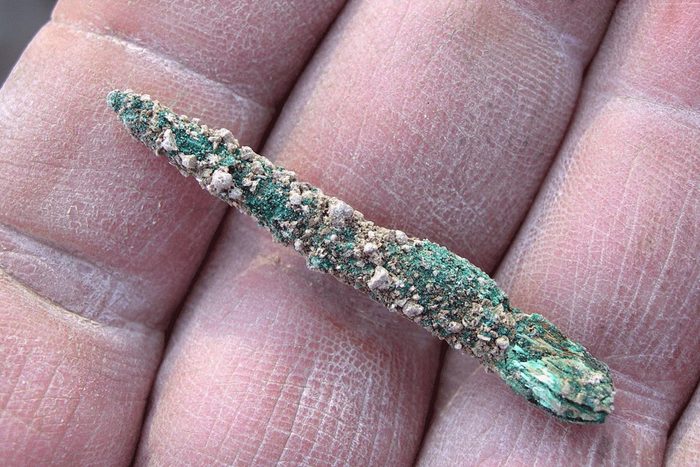
Copper awl: 6,000 years old
A metal tool less than two inches long was found in the grave of a woman in Tel Tsaf, Israel, and is considered the oldest metal object ever excavated in the Middle East. “The find suggests that the people of Tel Tsaf were engaged in or at least had acquaintance with advanced technology, metallurgy, hundreds of years before the spread of copper items in the southern Levant,” Danny Rosenberg, an archaeologist at the University of Haifa in Israel, told Live Science in 2014.

Complaint letter: 4,000 years old
A person named Nanni was unhappy about a copper shipment from a merchant named Ea-nasir, so he carved out a long letter on a clay tablet explaining that he’d been promised fine quality ingots and wasn’t happy about the ones that were delivered. “I shall (from now on) select and take the ingots individually in my own yard, and I shall exercise against you my right of rejection because you have treated me with contempt,” says the letter, according to a translation published in Archaeology magazine.
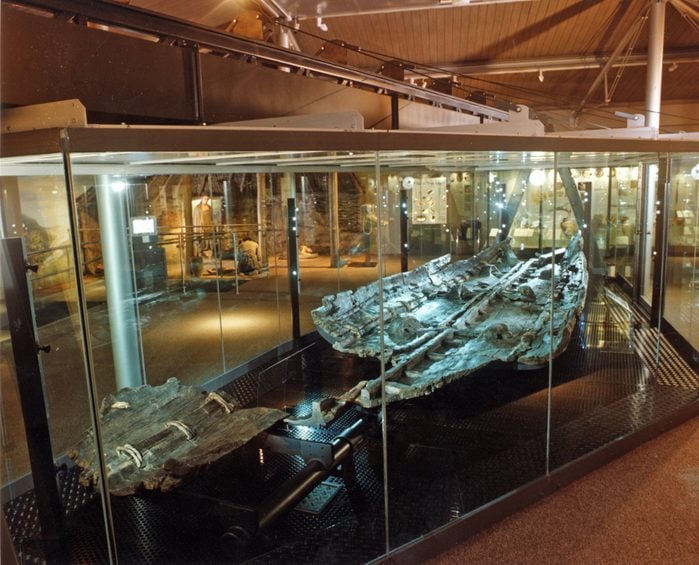
Seagoing boat: 3,500 years old
A large boat was found in the early 1990s during construction of a motorway in Dover, England. Researchers carefully removed about 31 feet of the boat from the ground, but weren’t able to retrieve the whole thing because excavations would have compromised nearby buildings—they’re still not sure how long the boat would have originally been. “There seems little doubt that the craft represents a sea-going vessel which presumably made regular trips across the Dover Straits to and from the Continent,” wrote Keith Parfitt, of the Canterbury Archaeological Trust, in the journal Current Archaeology.
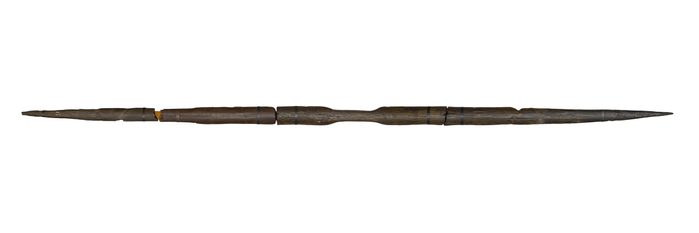
Bow: 9,000 years old
Although arrowheads have been found dating back as far as 61,000 years ago (made of bone, in a cave in South Africa), wooden bows are much more susceptible to decay. The oldest known complete bow ever found is the Holmegård bow, which turned up in a peat bog in Denmark after World War II. It was made from a thin elm trunk and is on display at the National Museum in Copenhagen. The stories behind these artifacts are known for the most part, but these strange mysteries about planet Earth are still up for debate.